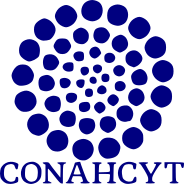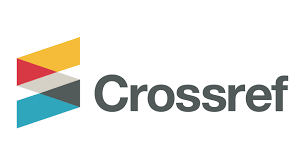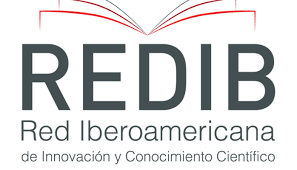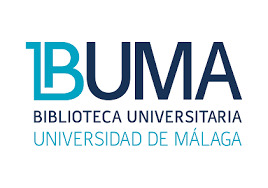Perception and meanings of the red guaje Leucaena esculenta (DC.) Benth. as a traditional food in the Ngiwa culture from Puebla, Mexico
DOI:
https://doi.org/10.18387/polibotanica.56.15Keywords:
Communalities, popoloca, culture, guaje, traditional foodAbstract
Traditional foods are part of the culture of indigenous communities; they are part of their history and identity. Guaje is a traditional food grown in the popoloca (Ngiwa) region of southern Puebla state, Mexico. The objective of this research was to identify the type of route of influence of human values, direct or indirect, and thus to know the meanings and communalities that guaje has for native consumers. A survey was applied to 200 consumers where they were shown an image of the guaje and asked to mention three words related to what they were seeing. New variables (factors) used in the construction of linear regression models were generated by factor analysis. Three multiple linear regression models were adjusted to estimate the multiple correlation coefficients RModel1, RModel2 and RModel3. These models are conformed as follow: consumption as a function of tangible attribute factors; consumption as a function of human value factors plus tangible attribute residuals; and consumption as a function of human value factors. The direct or human values influence was obtained by the difference between RMmodel1 and RMmodel2, and the indirect influence was obtained by the difference between the change in R (ΔR) and the RMmodel3 multiple correlation coefficient. The direct influence was not significant, indicating that the utilitarian element is most important, i.e., human values flowed through the importance of tangible attributes. The words were grouped by affinity, to calculate their frequencies and apply the k-proportions test and Marascuilo's procedure. Guaje presents the greatest frequency of utilitarian meanings (70.7 %) whose categories with the highest communalities were gastronomy (29.45 %) and economy (22.75 %).
References
Allen, M. W. (2001). A practical method for uncovering the direct and indirect relationships between human values and consumer purchases. Journal of Consumer Marketing, 18(2), 102–118. https://doi.org/10.1108/07363760110385983
Allen, M. W., Gupta, R., & Monnier, A. (2008). The interactive effect of cultural symbols and human values on taste evaluation. Journal of Consumer Research, 35(2), 294–308. https://doi.org/10.1086/590319
Allen, M. W., & Torres. (2006). Food Symbolism and Consumer Choice in Brazil (Vol. 1). Association for Consumer Research. http://www.acrwebsite.org/volumes/1000062/la/v1/LA-01http://www.copyright.com/
Álvarez, H. M., Martín, A. A., Herranz, T. I., Femia, P. M. (2012). Inferencias asintóticas sobre una combinación lineal de k proporciones. Modelación Matemática de fenómenos del medio ambiente y la salud, 2, 51-63. ABSTRACT (buap.mx)
Arbit, N., Ruby, M., Rozin, P. (2017). Development and validation of the meaning of food in life questionnaire (MFLQ): Evidence for a new construct to explain eating behavior. Food Quality and Preference, 59, 35–45. https://doi.org/10.1016/j.foodqual.2017.02.002
Aride, O. y Pàmies, P. M. del M. (2019). From Values to Behavior: Proposition of an Integrating Model. Sustainability (Switzerland), 11(21). https://doi.org/10.3390/su11216170
Begunca, A. (2016). European Journal of Economics and Business Studies Using List of Values as Base of Beer Consumer Segmentation Based on Their Lifestyle-Case of Study City of Pristina. European Journal OfEconomicsand Business Studies, 2(1), 172–189. https://doi.org/10.26417/ejes.v4i1.p171-188
Basurto, P. F. (2011). Los quelites de México: especies de uso ac¬tual, pp. 23-45. In: Especies Vegetales, Poco Valoradas: Una Alternativa para la Seguridad Alimentaria. MERA, O. L. M.; CASTRO, L. D.; BYE, B. R. (eds.). UNAM. México, D. F.
Blackburn, K. G., Yilmaz, G. y Boyd, R. L. (2018). Food for thought: Exploring how people think and talk about food online. Appetite, 123(1) pp. 390-401. https://doi.org/10.1016/j.appet.2018.01.022
Cuéllar, M. A. K., Hernández, M. A., y Cruz, C. J. G. (2022). Atributos intangibles en alcatraz blanco (Zantedeschia aethiopica (L) K. Spreng): significados psicológicos y estructura de valores humanos para el consumidor. Nova Scientia, 14(29) pp. 1-24. doi.org/10.21640/ns.v14i29.3129
Chalmer, B. J. (1986). Understanding statistics. USA. Marcel Dekker Inc. pp: 294-295
Corona de la Peña, L. E. (2018). Lo que se come en México panorámica de la gastronomía mexicana. México: Un inmenso horizonte gastronómico. Cultura alimentaria y economía. Una composición más allá de los sabores. BANCOMEXT Banca de Desarrollo. https://deas.inah.gob.mx/archivos/info_publicaciones/1574451312.PDF
Heckathorn, D. D. (2011). Snowball Versus Respondent-Driven Sampling. Sociol Methodol. 41(1),355-366. doi: 10.1111/j.1467-9531.2011.01244.x
Elliot, R. (1994). Exploring the symbolic meaning of brands. British Journal of Management, 5(1), 13-19. https://doi.org/10.1111/j.1467-8551.1994.tb00126.x
Good, E. C., Corona, De la P. L. E. (2011). Comida, cultura y modernidad en México. Perspectivas Antropológicas e históricas. Comida, cultura y modernidad en México | Mediateca INAH
Hauser, M., Jonas, K., & Riemann, R. (2011). Measuring salient food attitudes and food-related values. An elaborated, conflicting and interdependent system. Appetite, 57(2), 329–338. https://doi.org/10.1016/j.appet.2011.05.322
Hernández, M. A. (2020). Influencia de valores humanos en la aceptación del queso Chapingo y sus significados intangibles de compra. Agricultura Sociedad y Desarrollo, 16(4), 497–511. https://doi.org/10.22231/asyd.v16i4.1283
Hirschman, E. C. (1986). Comprehending Symbolic Consumption: Comprehending three theoretical issues. In Symbolic Consumer Behavior (pp. 4–6). Hirschman and Morris B. Holbrook, New York, NY: Association for Consumer Research. Recuperado el 10 de octubre del 2019. http://acrwebsite.org/volumes/12219/volumes/sv04/SV-04
Illescas, M. C., Hernández, M. A., Estrada, E. E., Murguía, C. R., Espejel, G. A., Santos, M. A. (2019). Influencia de los valores humanos en el consumo de quesos tradicionales chiapanecos: una comparación de las rutas directa e indirecta. Revista Mexicana de Ciencias Pecuarias, 10(4). https://doi.org/10.22319/rmcp.v10i4.4799
INEGI. (2020). Censo de población y vivienda. https://censo2020.mx/
Jeannete, P., y Baez, V. (2016). Tradición Cultural Gastronómica de Puebla. https://www.researchgate.net/publication/304153363
Johnson, D. E. (2000). Métodos multivariados aplicados al análisis de datos. International Thomson Editores.
Kahle, L. R., & Kim, C. H. (2019). A Comparing and Contrasting of the List of Values and the Schwartz Value Scale. https://www.researchgate.net/publication/333671924
Lee, P. Y., Lusk, K., Mirosa, M., & Oey, I. (2014). The role of personal values in Chinese consumers’ food consumption decisions. A case study of healthy drinks. Appetite, 73, 95–104. https://doi.org/10.1016/j.appet.2013.11.001
Lo Monaco, G., & Bonetto, E. (2019). Social representations and culture in food studies. In Food Research International, 115, 474–479. https://doi.org/10.1016/j.foodres.2018.10.029
Lo Monaco, G., Piermattéo, A., Rateau, P. y Tavani, J. L. (2016). Methods for studying the structure of social representations: A critical review and agenda for further research. Journal for the Theory of Social behavior, 47(3), 306-331.
Marascuilo, L.A., McSweeney, M. (1967). Nonparametric post hoc comparisons for trend, Psychological Bulletin, 67, 401-412.
Peralta, J. I., Gómez, C. A., Romero, C. P. A., Reyes, D. A. (2017). Uso antropocéntrico del guaje Leucaena esculenta (Moc. y Sessé Ex. DC.) Benth, en dos comunidades de la mixteca baja oaxaqueña. Polibotánica, 43, 1-16. https://doi.org/10.18387/polibotanica.43.15
Razali, N. M., & Wah, Y. B. (2011). Power comparisons of Shapiro-Wilk, Kolmogorov-Smirnov, Lilliefors, and Anderson-Darling test. Journal of Statistical Modeling and Analytics, 2(1), 21-33. https://www.nrc.gov/docs/ML1714/ML17143A100.pdf
Rokeach, Milton (1973), The Nature of Human Values, New York, NY: Free Press.
Román, C. N., García, M. del R, M., Castillo, G. A. M., Sahagún, C, J., Jiménez, A. A. (2014). Nutritional components and antioxidants of two species of guaje (Leucaena spp.): An underutilized traditional resource. Revista Chapingo, Serie Horticultura, 20(2), 157–170. https://doi.org/10.5154/r.rchsh.2013.07.023
Sánchez, H.J.C. (2014). Caracterización bromatológica y determinación de factores tóxicos naturales de partes comestibles de guaje rojo (Leucaena esculenta subsp. esculenta). Tesis de Licenciatura, Facultad de Química, UNAM, México, CDMX.
Sánchez, V. L. P., Espinoza, O. A., Thomé, O. H., & Moctezuma, P. S. (2021). Perception of traditional foods in societies in transition: The maize tortilla in Mexico. Journal of Sensory Studies, 36(2). https://doi.org/10.1111/joss.12635
Schwartz, S. H. (1994). Are There Universal Aspects in the Structure and Contents of Human Values? Journal of Social Issues, 50(4), 19–45. https://doi.org/10.1111/j.1540-4560.1994.tb01196.x
Schwartz, S. H. (2012). An Overview of the Schwartz Theory of Basic Values. Online Readings in Psychology and Culture, 2(1). https://doi.org/10.9707/2307-0919.1116
Schwartz, S. H., & Boehnke, K. (2004). Evaluating the structure of human values with confirmatory factor analysis. Journal of Research in Personality, 38(3), 230–255. https://doi.org/10.1016/S0092-6566(03)00069-2
Sharma, R., & Jha, M. (2017). Values influencing sustainable consumption behaviour: Exploring the contextual relationship. Journal of Business Research, 76, 77–88. https://doi.org/10.1016/j.jbusres.2017.03.010
Shin, D.H. (2004). “The Present Korean Traditional Food and Globalization” en Proceedings of the International Seminar on Developing Agricultural Technology for Value-added Food Production in Asia. Sapporo, Japan. Disponible en: http://www.cryo.affrc.go.jp/kankobutu/fftc/Oral_Presentations/fftc_or_06/fftc_or_06.
html
Thomson, D. M. H., Crocker, C., Marketo, C. G. (2010). Linking sensory characteristics to emotions: An example using dark chocolate. Food Quality and Preference, 21,1117-1125. https://doi:10.1016/j.foodqual.2010.04.011
Torres, S. V., Hernández, M. A., Pablo, C. M., Jáuregui, G. C. Z., Peralta, A. C., Espejel, G. A. (2020). Communalities of meanings for Mexican traditional cheeses: Zacazonapan cheese, Quesillo and Poro cheese. Acta Universitaria. Multidisciplinary Scientific Journal, 30, 1-13. https://doi.org/10.15174/au.2020.2875
Torres, S. V., y Hernández, M. A. (2021). Los valores humanos en el consumo de queso añejo de Zacazonapan. Nova Scientia, 13(2), 1-23. http://doi.org/10.21640/ns.v13i26.2826
Villegas, A. y Cervantes, E. F. (2011). La genuinidad y tipicidad en la revalorización de los quesos artesanales mexicanos. Estudios Sociales, 19(38), 146–164. https://www.redalyc.org/articulo.oa?id=417/41719205006
Downloads
Published
Issue
Section
License

Polibotánica by Departamento de Botánica de la Escuela Nacional de Ciencias Biológicas del Instituto Politécnico Nacional se distribuye bajo una Licencia Creative Commons Atribución-NoComercial-CompartirIgual 4.0 Internacional.




















